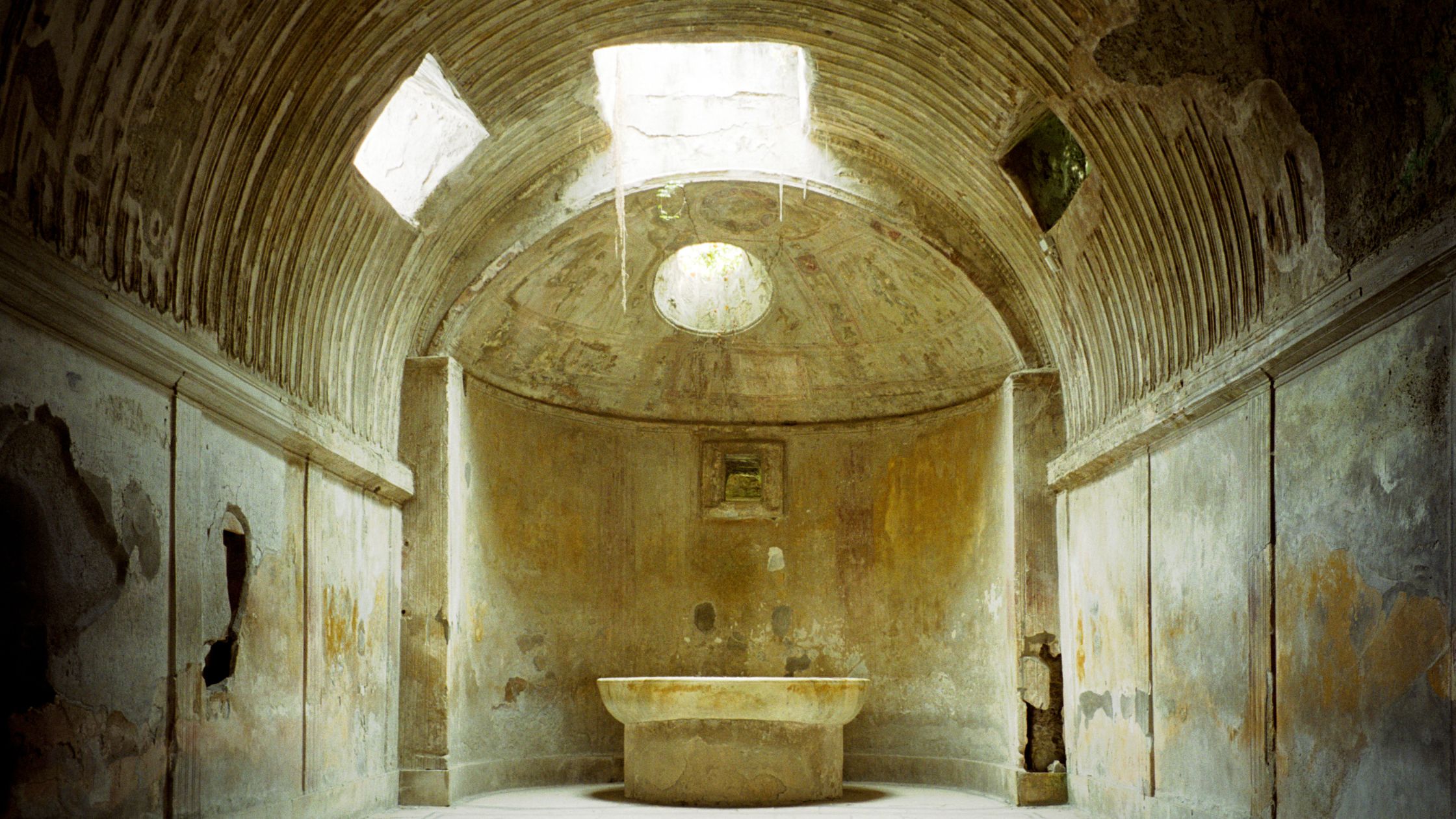The history of public bathing reveals fascinating engineering and cultural traditions, with two prominent models being the Roman Thermae and the Ottoman Hammams. This article presents a comprehensive analysis of the hypocaust heating systems used in both bathing cultures, specifically focusing on Roman Thermae vs. Ottoman Hammams.
We will explore the technical aspects, cultural significance, and evolution of these ancient heating systems, and ultimately provide useful insights for those interested in experiencing this rich heritage.
So, let’s dive into the world of ancient heating systems and discover how Roman Thermae vs. Ottoman Hammams compare.
Technical Aspects of Hypocaust Heating Systems
The comparison of Roman Thermae vs. Ottoman Hammams centers on their use of hypocaust systems. Below we delve into the technical details that underpin these ancient heating methods.
Roman Hypocaust: Engineering Marvel of Antiquity
1. Structure and Functionality:
- Raised Floors: Roman Thermae utilized floors raised on stacks of small pillars (pilae) that created an open space underneath. This allowed heated air from the furnace to circulate freely.
- Furnace Design: The furnaces, known as “praefurnium,” were located at one end of the structure. They burned wood or coal to produce hot air, which was then channeled through the hypocaust system.
- Thermal Distribution: The design ensured even heat distribution. The warm air not only heated the floor but also ascended to warm the walls, creating a consistent and comfortable temperature.
2. Advantages and Limitations:
- Efficient Heating: The Roman system was remarkably effective, creating a stable environment even in large, open spaces.
- Maintenance: However, the system required regular maintenance and a constant supply of fuel, which could be resource-intensive.
- Acoustic Considerations: The hollow spaces under the floors also produced unique acoustics, contributing to the ambiance of the thermae.
Ottoman Heating Innovations
1. Adaptation of Hypocaust Principles:
- Improved Heat Distribution: Ottoman Hammams built upon the Roman model, refining the distribution of heat. They integrated radiant heat elements along with the traditional underfloor systems.
- Enhanced Insulation: The construction materials, including specialized tiles and domed ceilings, improved heat retention, allowing for longer-lasting warmth.
- Aesthetic Integration: The system was seamlessly integrated into the architectural design. The heating mechanisms were concealed, ensuring that the visual and sensory experiences of the hammam remained uninterrupted.
2. Advantages and Considerations:
- Sustained Warmth: Ottoman hammams were designed to maintain heat more efficiently over time, an essential feature in colder climates.
- Cultural Adaptation: The blending of heating technology with artistic expression set Ottoman hammams apart, making them not just functional but also culturally enriching spaces.
Key Comparisons: Roman Thermae vs. Ottoman Hammams
1. Design Philosophy:
The Romans focused on engineering efficiency and large-scale public utility, while the Ottomans combined functionality with an emphasis on aesthetics and spiritual purification.
2. Heat Distribution:
Roman systems emphasized direct, underfloor heating with visible infrastructural elements, whereas Ottoman designs prioritized hidden heating elements that supported a more uniform heat distribution.
3. Cultural Impact:
In Roman society, the thermae were central to urban life, serving as meeting places for social interaction. Ottoman hammams, however, were often linked with ritualistic cleansing and a communal sense of renewal, reflecting the spiritual values of Islamic culture.
4. Maintenance and Operation:
Both systems required regular maintenance. The Roman hypocaust was mechanically simpler but needed a continuous fuel supply. Ottoman systems, while incorporating more complex design elements, benefited from improved insulation and energy retention.
In-Depth Analysis: Engineering and Cultural Perspectives
How Did the Hypocaust Systems Evolve?
What were the driving factors behind the evolution of hypocaust systems from Roman Thermae to Ottoman Hammams?
The evolution was driven by both technological innovation and cultural adaptation. The Romans pioneered the underfloor heating concept to meet the demands of urbanization and public bathing, creating a highly efficient system.
Over time, as these techniques spread and were adopted by different cultures, the Ottomans refined the method to better suit their climatic conditions and cultural practices. The result was a system that not only provided efficient heating but also harmonized with the artistic and spiritual dimensions of Ottoman society. This evolution is a perfect case study in Roman Thermae vs. Ottoman Hammams.

The Role of Architecture in Enhancing the Hypocaust System
How did architectural design influence the effectiveness of hypocaust systems in these ancient baths?
Architecture played a pivotal role in maximizing the efficiency of hypocaust systems. In Roman Thermae, the open design with extensive vaulted ceilings allowed for optimal heat distribution. The elevated floors, supported by robust pillars, were critical to ensuring the flow of warm air.
In Ottoman Hammams, the integration of domed ceilings and carefully designed spatial arrangements further enhanced heat retention. The use of high-quality tiles and natural insulation materials helped maintain a consistent temperature, making the bathing experience both luxurious and practical. These architectural innovations highlight the intricate relationship between form and function in Roman Thermae vs. Ottoman Hammams.
Practical Implications for Modern Hammam Experiences
What lessons from ancient hypocaust systems can be applied to modern hammams?
Modern hammams, including The Old Hammam in Edmonton London, draw inspiration from the ancient hypocaust systems. Our spa and wellness center incorporates advanced heating technologies that reflect the principles of uniform heat distribution and efficient energy use developed by the Romans and Ottomans.
Our commitment at The Old Hammam is to honor these traditions while embracing modern comforts; ensuring a truly immersive bathing experience.
The Modern Revival: Linking Past and Present at The Old Hammam
As we compare Roman Thermae vs. Ottoman Hammams, it becomes evident that the ancient art of bathing has much to offer today. The principles behind these heating systems continue to influence modern design, particularly in spa and wellness centers that value both tradition and innovation.
Why Experience a Hammam at The Old Hammam in Edmonton London?
1. Rich Historical Inspiration: At The Old Hammam & Spa, every detail is crafted with respect for the ancient traditions of both Roman Thermae and Ottoman Hammams. Our design incorporates modern interpretations of these hypocaust systems, providing you with an experience steeped in history and luxury.
2. State-of-the-Art Comfort: Our facilities benefit from advanced heating technology inspired by the time-tested methods of Roman Thermae vs. Ottoman Hammams. You can enjoy a consistent, soothing warmth that envelops you from the moment you step in.
3. Cultural Immersion: The Old Hammam is not just a spa – it’s a journey into the past. We offer an environment where you can relax, rejuvenate, and connect with the rich cultural heritage of ancient bathing traditions.
4. Expertly Designed Spaces: Just as Roman and Ottoman baths were carefully designed to balance function and beauty, our hammam spaces are meticulously crafted to provide a seamless blend of history and modern comfort.
How Does The Old Hammam Honor These Traditions?
Architectural Design:
Our interior design draws directly from the artistic motifs found in Roman Thermae and Ottoman Hammams. From the interplay of light and shadow to the intricate tiling work, every element is a homage to these ancient civilizations.
Modern Heating Technologies:
By incorporating modern, energy-efficient heating systems inspired by the ancient hypocaust, we ensure that our guests experience the best of both worlds – historical ambiance with contemporary reliability. This careful balance is a direct reflection of the innovations seen in Roman Thermae vs. Ottoman Hammams.
Holistic Wellness:
The bathing experience at The Old Hammam is designed to stimulate not just the body, but the mind and spirit as well. Much like the communal and restorative aspects of ancient baths, our hammam offers a sanctuary for relaxation and renewal.
Final Words
So – Roman Thermae vs. Ottoman Hammams reveals a fascinating interplay between engineering prowess and cultural expression. The Romans laid the groundwork with their innovative underfloor heating techniques, while the Ottomans refined these methods to create spaces that were both functional and artistically enriching.
The Old Hammam stands as a modern tribute to these ancient traditions, offering you a chance to immerse yourself in a sanctuary where history meets contemporary luxury.
Visit The Old Hammam in Edmonton London today for a truly transformative hammam experience. Let the legacy of Roman Thermae vs. Ottoman Hammams envelop you in warmth, history, and rejuvenation. Book your session now and discover the timeless art of bathing reimagined for today’s discerning traveler.







